A Complete Guide To Visit The Jabarkhet Nature Reserve In Mussoorie In 2025
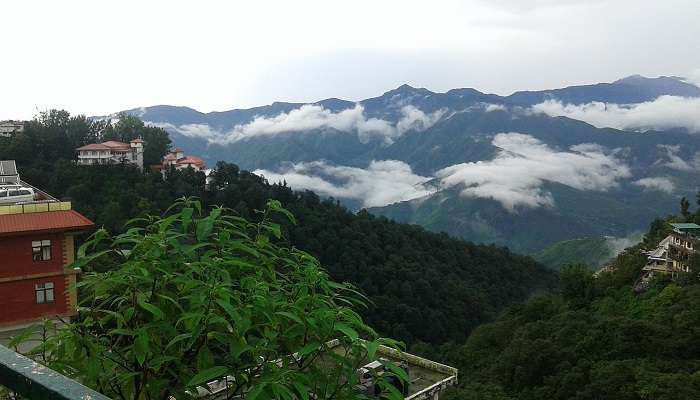
Jabarkhet Nature Reserve, a calm and peaceful haven amid the Himalayas, is situated near the lovely town of Mussoorie. Offering a unique chance to interact with the natural world, this 100-acre reserve is a paradise for those who enjoy animals and the surroundings. Anyone looking for a serene haven from daily life’s bustle can visit Jabarkhet Nature Reserve, Uttarakhand, which boasts impressive views and great biodiversity. Surrounded by the breathtaking Himalayan mountains and verdant green woods, the reserve is about 2,000 metres above sea level. The moderate environment of the area makes it perfect for visitors all year long.
History and Significance
It is home to many flora and fauna, Let’s dive into the history and significance of the Jabarkhet Nature Reserve.
1. Origin of the Reserve
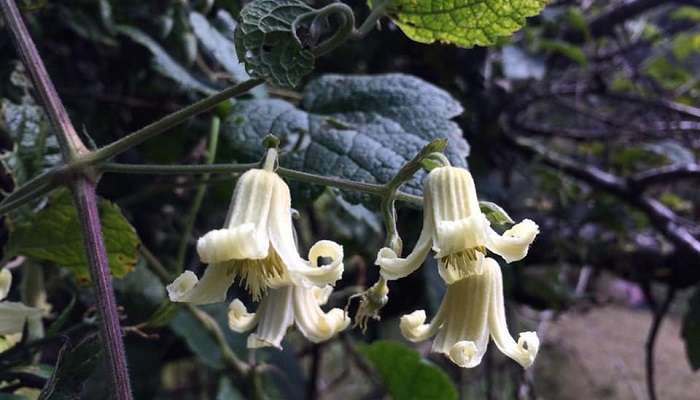
Established in 2004 by the Uttarakhand Forest Department, the Jabarkhet Nature Reserve’s main goals are to save the area’s distinctive flora and fauna as well as to encourage environmentally friendly tourism and sustainable development. The history of the reserve is firmly anchored in the preservation activities of the nearby lands, which have great ecological worth for the services they offer as well as for the diversity they support.
Since the colonial era, the Jabarkhet area has been a component of the Mussoorie Forest Division; the British saw the value of the area’s natural resources. Deforestation, ecosystem fragmentation, and unsustainable travel methods have all been hazards the area has seen over the years. Dealing with these issues and guaranteeing the long-term preservation of the region’s biodiversity depends critically on creating the Jabarkhet Nature Reserve.
Also Read: Kempty Falls Hotels
2. Conservation Projects
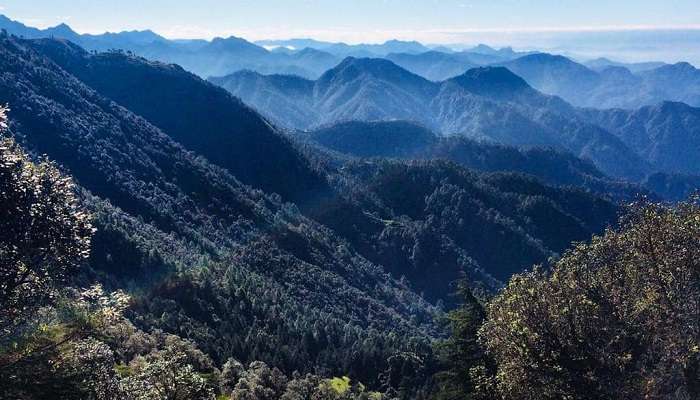
Many threatened species, as well as a great variety of plants and animals, call the Jabarkhet Nature Reserve home. The reserve’s conservation initiatives centre on safeguarding these species’ natural habitats and encouraging sustainable living among nearby populations. Restoring degraded forest areas by afforestation and habitat management is one of the main conservation projects under progress at the reserve. Working with local people and NGOs, the reserve’s staff has planted thousands of native tree species to increase forest cover and create appropriate habitats for species.
The reserve also functions as a research centre, giving academics and experts a stage on which to investigate and learn about the particular uniqueness of the area. The reserve has been the site of several studies with an eye toward subjects including species variety, ecosystem functioning and how climate change is affecting the flora and fauna of the area.
Visiting Jabarkhet Nature Reserve
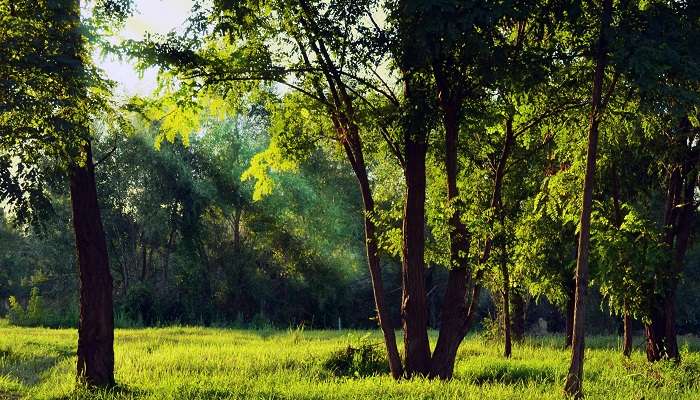
.
Timings and Entry Fees: Depending on the season, the Jabarkhet Nature Reserve is open from 9:00 AM to 5:00 PM and requires entry fees ranging from ₹50 to ₹100 for each person. Mondays are reserved for maintenance and cleaning.
How to Reach: The reserve is located approximately 10 km from Mussoorie’s main town. From Mussoorie, visitors may reach the reserve via cab or bus; alternatively, they can walk or bike along the picturesque routes. There is a special parking lot near the reserve entrance for drivers heading there. Before starting their trip, visitors are encouraged to verify the weather and road accessibility since landslides or snowfall can influence the roads in some seasons.
Location and Architecture: At the top of a hill, the Jabarkhet Nature Reserve has a stunning view of the Doon Valley and the nearby landscape. Featuring rustic wooden cabins and paths winding throughout the forest, the reserve’s architecture is meant to fit perfectly with the natural environment.
Among the reserve’s amenities is a visitor’s centre that offers details on its background, species count and conservation initiatives. For guests, there are also simple facilities, including drinking water and restrooms.
Related Post: Sitabani In Uttarakhand
Experiences and Activities
There are many activities one can do at Jabarkhet Nature Reserve, and these activities create a lifetime memory.
1. Hiking and Trekking
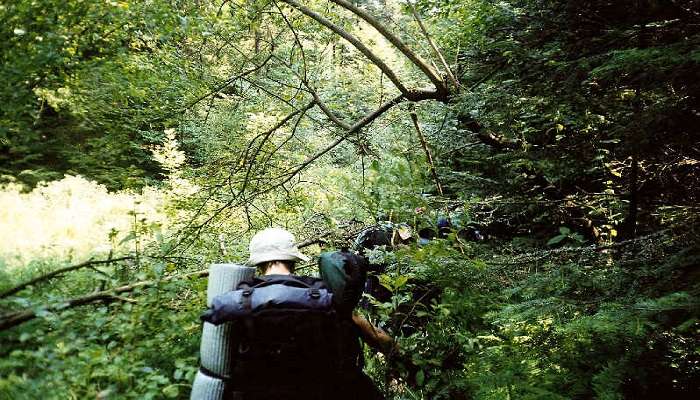
The Jabarkhet Nature Reserve’s rich system of hiking and trekking paths is one of its key draws. The reserve lets guests discover the breathtaking scenery and varied flora and animals at their own speed on many paths ranging from simple to difficult. Comprising a range of habitats, including oak woodlands, meadows and streams, the Jabarkhet Loop is the most well-liked path at the reserve. Completing the almost 5-kilometer loop will take two to three hours.
The reserve provides the Nag Tibba Trek, which carries guests to the top of Nag Tibba, the highest peak in the Jabarkhet region, for those looking for a more demanding experience. Depending on the participants’ degree of fitness, the approximately 12-km walk can be finished in one to two days. Along with seasoned experts who offer insights into the reserve’s ecology and conservation initiatives, visitors can enjoy guided nature walks, birdwatching excursions, wildlife photography and trekking across the forest paths.
2. Birdwatching
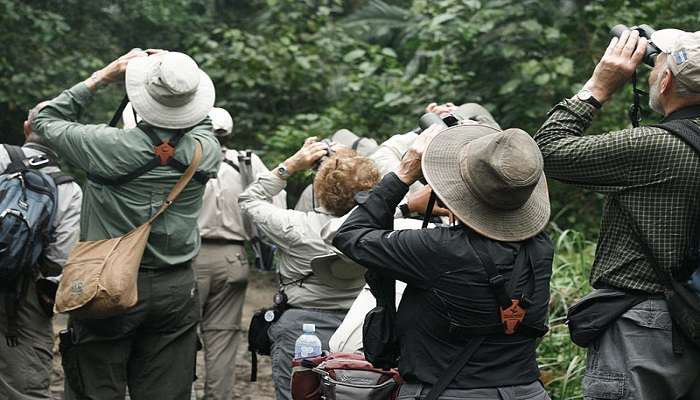
With around 150 recorded species of birds inside its limits, the Jabarkhet Nature Reserve is a birdwatcher’s dream come true. Among the resident and migrating birds found on the reserve are the Kalij Pheasant, Himalayan Monal and Himalayan Griffon Vulture. Guided birdwatching trips allow visitors to see some of the most elusive species in the area. Experienced naturalists with in-depth knowledge of the avifauna of the area lead the trips so that guests may recognise several species depending on their calls, plumage and behaviour.
At the reserve, the greatest times for birdwatching are in the spring and autumn when migrating birds are abundant in the surroundings. Nonetheless, the reserve is a great place for birdwatchers any season since it hosts a wide variety of resident species all year long.
Related Post: Kathgodam To Neem Karoli Baba
3. Camping

For guests wishing to spend the night under the stars, the Jabarkhet Nature Reserve provides camping amenities. The reserve has set aside camping areas furnished with tents, sleeping bags and campfires—basic conveniences.
The serene settings of the reserve let campers enjoy stargazing, bonfires and other outdoor pursuits. Unmatched in experience is waking up to the sound of birds and the pure mountain air. One of the best ways to really appreciate the surroundings and learn about the need for preservation is by camping at the reserve. Programmes and seminars on subjects including sustainable living, animal photography and nature journaling let guests take part.
4. Other Activities
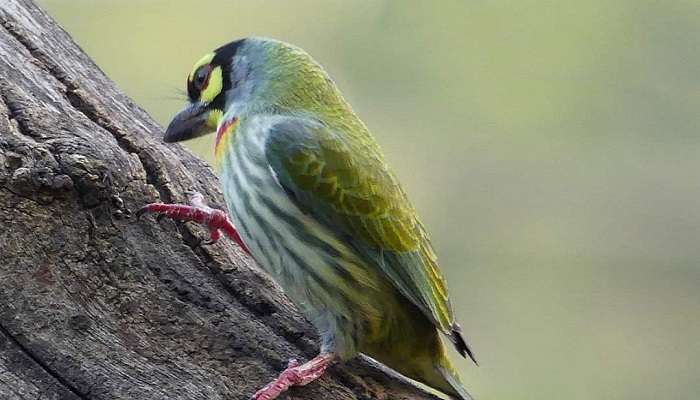
Apart from hiking, trekking, birdwatching and camping, the Jabarkhet Nature Reserve presents a variety of other pursuits for guests. These consist:
Wildlife Photography: The varied vegetation and species of the reserve give plenty of chances for those interested in wildlife photography to produce breathtaking pictures.
Nature Interpretation: Visitors can take guided trips and seminars emphasising the ecology, biodiversity and conservation activities of the area. The reserve provides educational initiatives for scholars and students eager to explore the natural legacy of the area.
Yoga and Meditation: The reserve’s serene settings make it the perfect place to do yoga and meditation.
You May Also Like To Read: Solo Trip To Uttarakhand
A hidden treasure in the middle of India, the Jabarkhet Nature Reserve presents a special fusion of outdoor activities, conservation initiatives and natural beauty. The reserve provides something for everyone, whether your interests are in nature, wildlife or just a quiet haven. Book your trip to Uttarakhand and discover the Himalayan peace. Discover the breathtaking scenery, varied flora and fauna, and reserve preservation. Accompanied by your loved ones, this experience will be more rewarding as you experience all the fun with them.
For our editorial codes of conduct and copyright disclaimer, please click here.
Cover Image Credit: Manasarya92 for wikimedia commons
Frequently Asked Questions About Jabarkhet Nature Reserve
What is the best time to visit Jabarkhet Nature Reserve?
The best time to visit Jabarkhet Nature Reserve is from March to November when the weather is mild, and the reserve is open for visitors. Avoid visiting during the monsoon season (June to September) due to heavy rainfall and potential landslides.
Are there any specific dress codes or requirements for visiting Jabarkhet Nature Reserve?
Yes, visitors are required to wear comfortable shoes and clothing suitable for outdoor activities. It is also recommended to carry a light jacket or sweater for cooler evenings. No specific dress code is required, but modest dressing is appreciated.
Can I bring my pet to Jabarkhet Nature Reserve?
No, pets are not allowed within the reserve. The reserve is a protected area, and pets can disrupt the natural habitat and wildlife. Visitors are advised to leave their pets at home for the duration of their visit.
Are there any specific rules or regulations for visiting Jabarkhet Nature Reserve?
Yes, visitors are required to follow the reserve's rules and regulations, including staying on designated trails, not littering, and not disturbing wildlife. Visitors are also advised to respect the reserve's boundaries and not venture into restricted areas.
Can I camp within Jabarkhet Nature Reserve?
Yes, the reserve offers camping facilities for visitors who want to spend the night under the stars. Campers can enjoy stargazing, bonfires and other outdoor activities in the reserve's peaceful surroundings.
People Also Read:
Anamalai Tiger Reserve Kukrail Reserve Forest Sinharaja Forest Reserve

With a passion for exploring and travelling to the roads long forgotten, experience the world through enthralling stories and adventures. Join me as I share my experiences at some of the world’s most popular tourist destinations and quench that pestering curiosity with something exciting!











